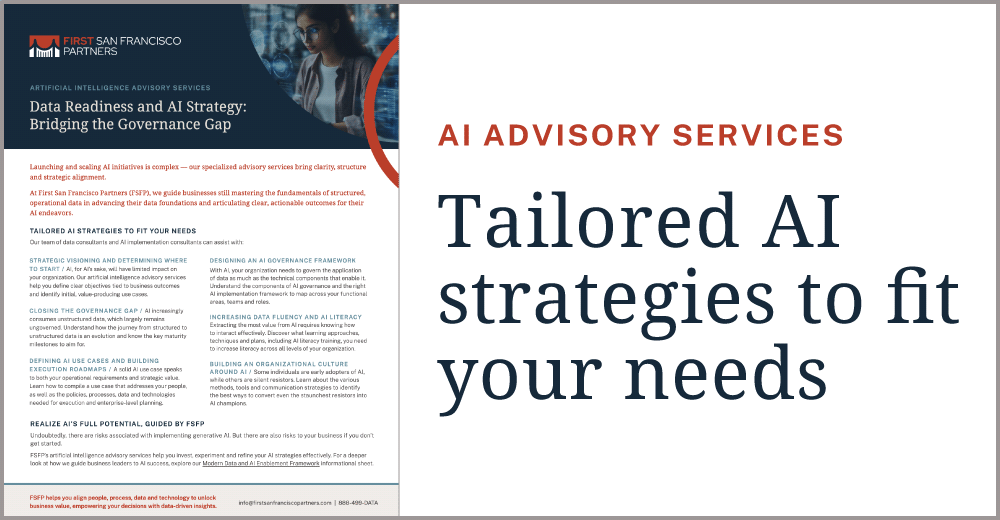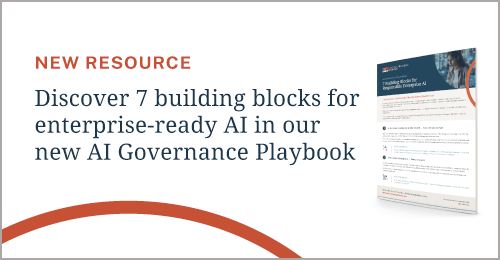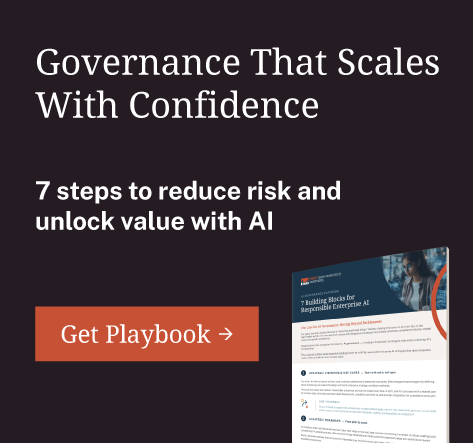In our digital economy, data is one of the most — if not the most — valuable asset. Whether your organization is in pursuit of digital transformation, data literacy or even just “good old fashioned” data-centricity, it’s clear data is an asset that must be valued, managed, governed, protected and ultimately, appropriately leveraged for better decision-making, competitive advantage and business optimization.
But while data (and its potential value) seems to be a universal priority for most companies, it’s not always directly aligned with business strategy.
What Happens When You Don’t Align Data Strategy and Business Strategy
When organizations fail to solidify the link between data strategy and business strategy, they may also fail to understand data’s true worth. This oversight can result in an organization having zero basis for prioritization and an inability to determine which data they can or cannot function without — what is the “integrated set of choices” needed for your data? When you’re unable to articulate why the data and insights are critical, it becomes more difficult to not only defend its results but also its value.
Over time, data may be seen as a less valuable function and when budgets get tight and the link to clear business value is opaque or missing, necessary funding and resources can get cut. And even when data is well funded, if the data strategy and business strategy aren’t effectively linked, the resulting data activities may be viewed as disparate, low-level, siloed or even momentary. Some people may even confuse data management with data strategy. In actuality, data management is the execution of the data strategy.
“Strategy is an integrated set of choices that uniquely positions the firm in its industry so as to create sustainable advantage and superior value relative to the competition.” – Playing to Win, A.G. Lafley and Roger L. Martin
What Happens When You Do Align Data Strategy and Business Strategy
The key benefit of alignment is organizational commitment. When everyone can identify why data is important, how it accelerates the business and how each person has a role to play in helping to manage it as an asset, it gets embedded into organizational culture and operations. Achieving a data-driven and data-literate future state will require the coordination and collaboration of every employee, team and group across the organization. For the vision to be realized and the plan to be implemented, clear roles, responsibilities and communication are key.
When there’s a clear link to business strategy and key objectives, data gets true business support (think funding, resources and executive sponsorship). As an integrated organization, you’ll be better enabled to align activities and projects to the specific requirements of the business and understand how data contributes to or impedes progress.
It is also easier to adapt and adjust as business priorities suddenly change (think market crash 2008 or pandemic 2020). Rather than the data work getting cut or reduced across the board, when the business strategy and the data strategy are aligned, the adjustments to the data work support the change in demand and direction. In this way, a more surgical approach ensures that the data, people, process and tools are still available to support the core business functions needed to survive a market shock and thrive on the other side.
How to Link Data to Business Impact
I would venture to guess more companies have a business strategy than a data strategy. Whether you start with one or the other, don’t forget the execution of a good data strategy can and should influence the business strategy — and ultimately assist the business to innovate in new ways.
Here are some practical approaches and best practices to help you get started:
- Go top-down and review your stated corporate objectives. Then identify what, why and how data is needed to deliver on those goals.
- From the highest level, take it down to the divisional and departmental level to make sure you understand the cascading choices that need to be made and how data is involved or contributes to the ability to make those choices.
- For another view, go bottom-up and review specific issues/challenges/requirements from a tactical lens and identify how data understanding must be improved to solve beyond just those problems. Sometimes this approach feels more tangible and can help people see the link between business goals and data value in a very direct way.
- To truly translate tangible business value and alignment, link progress metrics with impact metrics and align everything to company-wide business goals. (Check out this post for a progress vs. impact metrics refresher.)
- Reevaluate your data strategy as frequently as your business reevaluates theirs. If the business strategy is evaluated quarterly vs. annually, mirror that cadence.
- Recognize the multiple levels of business strategy and their importance. Regardless of the scope of data you align with most closely on a granular level, always maintain a line of sight to key business objectives and drivers.
- Consider what is limiting people from delivering on the strategy and linkage to desired outcomes. For example, if you need to grow by 200%, then you need to have the capacity to scale in volume. Expand your lens and understanding to include not only what is needed to achieve the goal but also what is needed to address any gaps and roadblocks.
Remember also that your initial vision may be limited by what you know or don’t know. The prioritization of execution on aligning data strategy and business strategy may change dramatically over time. It’s not redirection, it’s growth and expansion. And it could be based on your own increased capability to align data with strategic business initiatives and value.
At First San Francisco Partners, our methodology is premised on “agility within a predictable plan.” Bake in explicit checkpoints to evaluate your strategies and their linkage to ensure they stay focused, fresh, relevant and flexible.
Array



